“This post contains affiliate links, and I will be compensated if you make a purchase after clicking on my links.”
Cleaning aluminum before welding is a vital step in preparing the metal to prevent corrosion and other problems.
So how do you clean aluminum before welding? This preparation step contains two major steps:
- Degrease the aluminum so
that no residual contaminants or moisture remains. This process removes
substances from the surface of the aluminum that might cause defects or
porosity problems during welding operations.
- Remove any layers of oxidation on the aluminum using an oxide removal. Oxides that are welded into the joint of a piece of aluminum will cause that joint to be structurally weak compared to a clean weld. Oxidation also increases the melting point of aluminum.
While this seems like a relatively straightforward process (and it usually is), there are many ways to go about performing these two steps to make sure that the cleaning is successful, and the subsequent weld goes smoothly. Read on to find out more about cleaning aluminum for welding.
Equipment to Clean Aluminum Before Welding
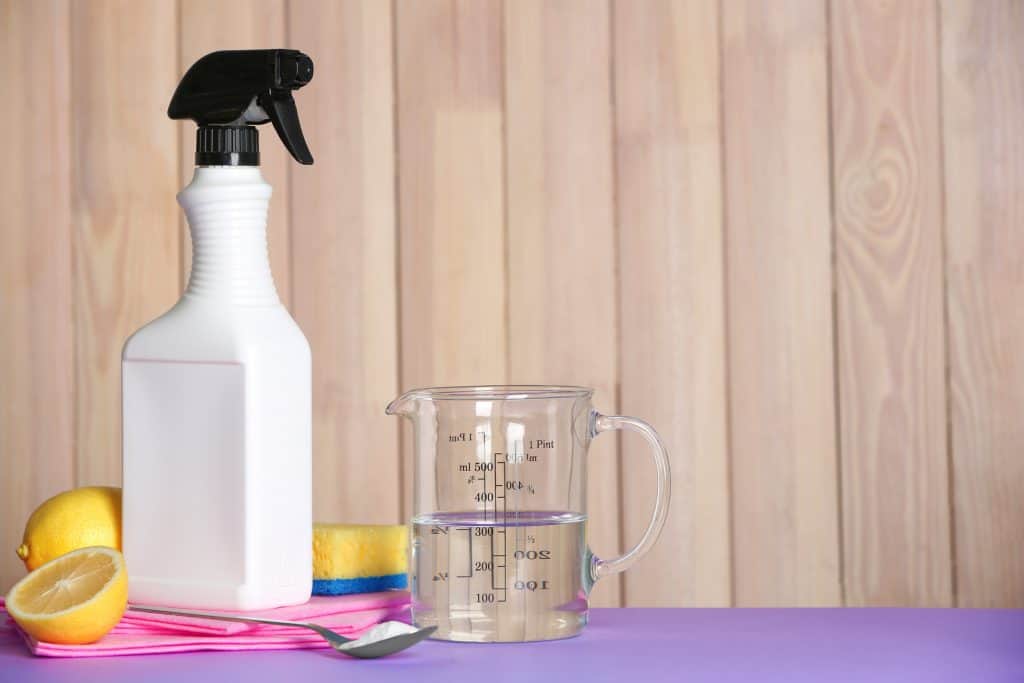
If you’re going to clean your aluminum before you begin a weld, you need a few pieces of relevant equipment. To clean aluminum prior to a weld, collect the following items:
- A solvent or alkaline cleaning solution to degrease the aluminum: There are several options available for this, including regular dish soap, but acetone and lacquer thinner are popular choices.
- An oxide removal spray (or
vinegar): There are commercial oxide removal
solutions that can come as either a bottled substance or an aerosol spray, but
ordinary white vinegar can also be used to remove oxidation on the surface of
the aluminum.
- Several clean, fresh
microfiber rags (do not use regular woven shop rags): You’ll need rags to wipe down the aluminum to clean it while it is
wet as well as fresh rags to thoroughly dry the aluminum once cleaning and
deoxidation are complete.
Used regular shop rags, even if they have been laundered, are a poor choice for this task, because they are bad about transferring contaminants such as oils and hydrocarbons to the aluminum’s surface.
- Stainless steel,
soft-bristled wire brush. After a piece of aluminum
has been degreased and either doused with vinegar or a deoxidizing solution,
you’ll want to use a wire brush to gently scrub away any signs of oxidation on
the surface of the aluminum.
Choose brushes with soft bristles to avoid scratching the aluminum. You can find stainless steel wire brushes in both manual and powered varieties.
- Hot water: Many alkaline solutions for cleaning aluminum require the aluminum
to be immersed in hot water for optimal effect. Keep a sink of hot water
available for the task of cleaning your aluminum, and having a spray attachment
for rinsing is ideal.
- Brown kraft paper: If you are not going to be welding the piece of cleaned aluminum
right away, it is recommended to keep your aluminum wrapped in brown kraft
paper to prevent it from becoming dirty again or being exposed to further
oxidation.
If the welding is going to be done immediately, this step can be safely skipped. But for any aluminum that is going to be stored for a few days, it should be wrapped to avoid degrading all the hard work undertaken in cleaning and prepping the aluminum.
- Packing tape. If you do decide to wrap your cleaned aluminum up for later welding
use, you’ll need packing tape to help secure the brown kraft paper to the
aluminum.
Make sure that no packing tape contacts the surface of the aluminum, as this will defeat the purpose of cleaning the aluminum of contaminants before a weld.
What to Do When Prepping Aluminum for Cleaning
When you are cleaning aluminum for
welding, it pays to do a little preparation first. Gather your tools ahead of
time, so you don’t have to stop the project mid-way from going hunt something
down.
Gathering your materials ahead of time also will let you know if you’re low on
anything. You don’t want to get ready to clean aluminum for welding only to
find out that you are out of vinegar, soap, or acetone. Also, make sure you
have an eyewash station ready to go.
Clear the table and lay down a clean towel as a working surface, and put the aluminum on it. Be sure to set this area up near a sink of hot water if you are planning to use an alkaline (soap) solution as a degreaser, rather than a solvent.
Between cleaning sessions, make sure that your wire brushes and other cutting tools are cleaned frequently, to reduce the chance that they will transfer debris and contaminants to your fresh aluminum during the cleaning process.
What Not to Do When Prepping Aluminum for Cleaning
When you’re preparing aluminum for welding, along with several things you should always do, there are also things you should never do. Here is a list of things you shouldn’t do if you’re preparing aluminum to be cleaned before a weld:
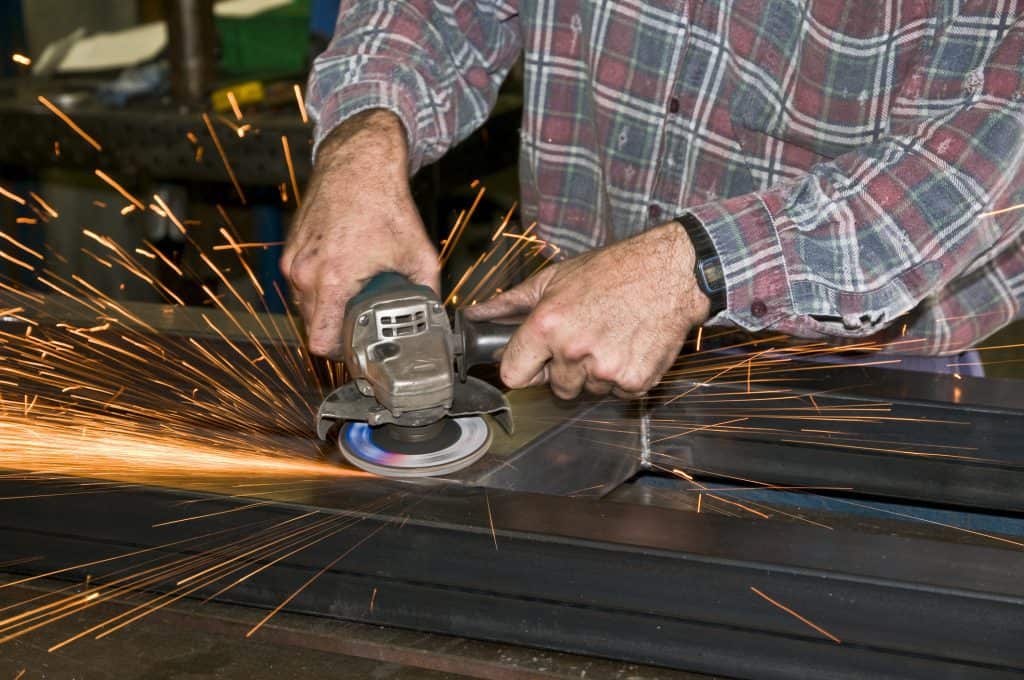
- Do not use cutting tools that leave a ground or smeared surface behind. If you need to cut aluminum down to size for welding, use a high-rotation circular saw which leaves a clean-cut surface, rather than a band-saw, which will leave a smeared surface.
Material smears in a weld cover potential defects during post-weld inspect and can hide dangerous flaws in construction. Avoid material smears whenever possible.
- Avoid oxygen fuel gas cutting, carbon arc cutting, and carbon arc gouging, as oxygen fuels naturally give off moisture as a byproduct of combustion, and moisture is to be avoided around aluminum at all costs.
- Do not preheat above 1500F, which promotes oxidation.
- Do not use compressed air to
clean an aluminum joint for welding. While this
seems like a time-efficient tool on its face, the contents of a can of
compressed air will easily transfer moisture and contaminants to an aluminum
surface.
- Do not use shop rags to
clean aluminum for welding. These rags are too
likely to leave behind either oily contaminants and dust/debris and are bad
about shedding lint too, which can be both annoying and dangerous.
It is difficult sometimes to tell what a shop rag has been doused in previously, and if a shop rag has been used to mop up gasoline or other volatile chemicals, it can pose a severe fire risk at the welding station due to sparks.
Disadvantages of a Dirty Aluminum Weld
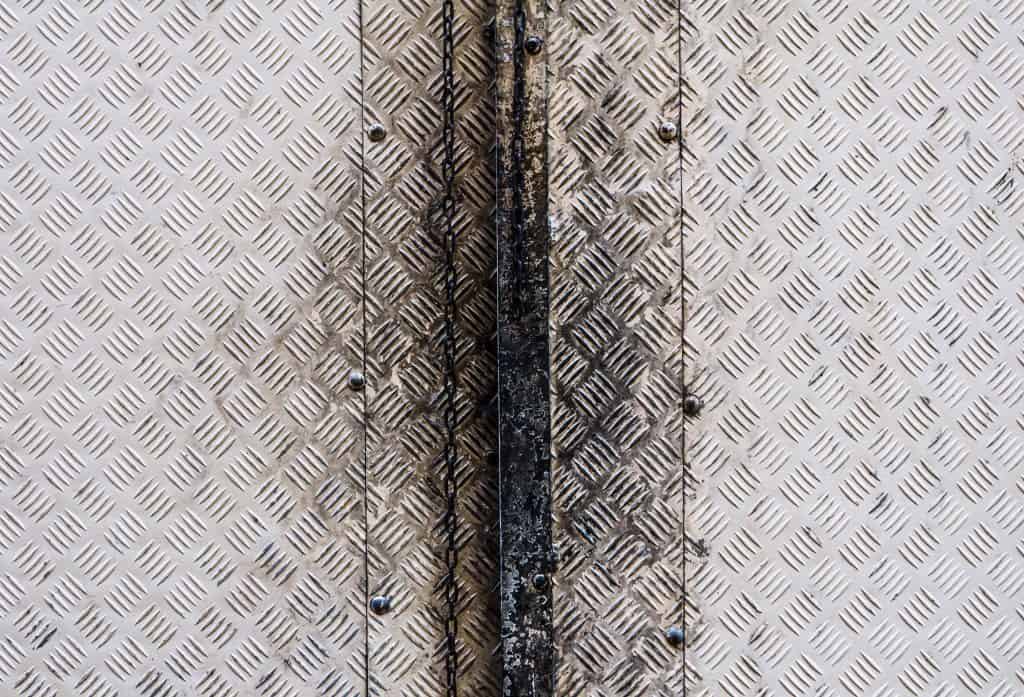
Impatient welders might be tempted to skip the step of cleaning aluminum before a weld, but they’d be fools to do it. There are many risks involved with trying to weld dirty aluminum, including the following:
- Erratic arc: Misbehaving arcs tend to splatter and move slag to the far edges of
the weld where it is difficult to remove. Erratic arcs lead to ugly and
unprofessional-looking weld jobs. They also make the task of welding itself
more difficult to control.
- Added resistance: Added resistance increases the amount of heat involved in the weld
and can cause the weld surface to become too wide.
- Sooting: When soot is generated at a weld site, this causes an ugly black
flaw at the weld site rather than a nice smooth silver-colored border. Soot is
caused by oxide and other contaminants being combusted on the surface of the
aluminum.
- Lack of fusion: Contaminants in an aluminum weld can cause significant lack of
fusion issues, and can even in some cases cause the site of the weld to
structurally fail (or at least fail to pass inspection).
- Poor wire feeding: Poor wire feeding in welding can lead to increased use of filler materials, wasted downtime troubleshooting weld issues, and an overall decrease in weld quality. Poor wire feeding is often due to improper materials such as dirty aluminum filler.
Advantages of a Clean Weld
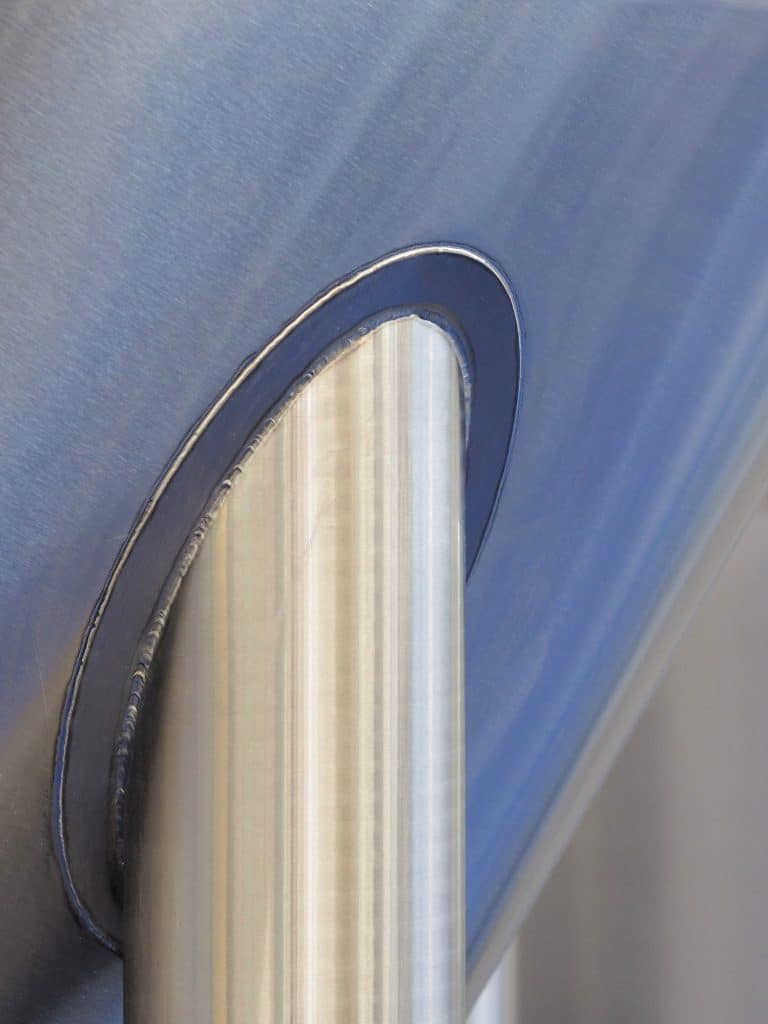
There are many disadvantages of trying to weld with dirty aluminum; likewise, there are also many benefits to making sure your aluminum is clean before you try to weld with it.
- Consistency: Clean welding materials offer a level of consistency in the
fabrication lab and will allow you to use your aluminum as a control variable
in your welding performance.
If something goes wrong with your weld and the aluminum is clean, that’s one less major suspect for the cause of the problem.
- Freedom from porosity: Porosity is a quality of metal caused by contaminants such as
hydrocarbons or oxidation being welded into them.
If a metal becomes porous, it forms a less structurally-sound joint, and if the metal is porous enough at the weld site, this joint can even fail as a result. But if the aluminum is clean, there will be no hidden flaws to the weld, and the joint should work as intended.
- High strength: Because they are free of contaminants, welds performed with pure
aluminum have a higher tensile strength than welds performed with contaminated
aluminum or aluminum with aluminum oxides present.
Since metal welds bear the responsibility of a construction project’s overall safety and durability post-build, the welds used must be as strong as possible to prevent unintended structural damage.
- High quality: If someone goes through the trouble to clean their aluminum before
welding, it gives the resulting weld jobs a high level of quality, and quality
weld jobs can demand better pay and incentives than shoddy ones.
High-quality weld jobs are also a must for anyone who likes to take pride in their work, especially work that they’ve built with their own hands. To have that sense of satisfaction, it’s worth taking a little extra time to make sure your weld job is done right the first time.
Major Types of Aluminum Contaminants
Aluminum is exposed to several major types of contaminants from the time it is manufactured for mass retail to the point that it reaches the welding studio. These contaminants can be broken down into three major categories:
- Moisture: Because aluminum oxidizes extremely quickly, this means that it has
to be kept away from moisture as much as humanly possible. Oxidation is what
leads to rust in aluminum and rust is difficult to stop entirely once it
begins.
Aluminum can be exposed to moisture both in shipping conditions and also in storage conditions once it reaches the home. This moisture can either be from direct exposure, such as a leak to ambient moisture in the air.
Aluminum can also suffer direct moisture damage due to condensation. This frequently occurs in storage areas that are not temperature or humidity controlled, as fluctuating temperatures in storage lead to condensation of water on the surface of the aluminum.
- Lubricants: Construction materials are often coated with lubricants or other
oils to increase their visual appeal (because who doesn’t like shiny things?)
and also to protect them from moisture damage.
Unfortunately, if combusted during the welding process, these lubricants and oils can release chemicals that create flaws in the weld. If left to sit on aluminum for long periods, these lubricants can also cause oxidation by releasing hydrocarbons.
Lubricant contamination in aluminum is one of the reasons degreasing is the first step taken in preparing aluminum for a weld.
- Oxides: Aluminum oxide is the substance that is formed when aluminum is
exposed to moisture and oxides or rusts. This patina of rust has a higher
melting point than pure aluminum alloy, and the resulting weld job will be that
much more difficult as a result.
Aluminum alloys have a melting point of 12000F, while aluminum oxide has a melting point of 37000F. As you can see, it is significantly more challenging to get aluminum to melt if it has rusted before use.
Not only does oxidation make welding intrinsically more complicated, it also can lead to a variety of oxide inclusion type defects in the weld, making the entire job lower quality and more likely to suffer a structural failure.
While these are the major categories of contaminants that aluminum can be subjected to, here is a list of other things that the aluminum might be contaminated before use with the following:
- OIl
- Ink
- Grease
- Dirt
Many things can dirty and contaminate aluminum before welding, and this contamination can have serious lasting effects on the quality of the weld. This is why degreasing and deoxidizing aluminum before welding is so essential.
Good Solvents to Degrease Aluminum
Before you get started on welding aluminum, the
first thing you’ll need to do to clean the aluminum for welding is to degrease
it. This will remove the oil, grease, dirt, and other contaminants from the
aluminum’s surface that might cause a flaw in the welding job.
One tactic for degreasing aluminum before welding is to use solvents to clean it. Some solvents that are typically used in metal fabrication environments to clean aluminum include the following chemicals:
- Acetone
- Methyl ethyl ketone
- Lacquer thinner
- Toluene
Of these solvents available for degreasing aluminum, two of the most popular and commonly available are acetone and lacquer thinner.
Why Acetone and Lacquer Thinner Are Good Solvents to Clean Aluminum
There are several advantages to using acetone and lacquer thinner as solvents for cleaning aluminum before welding. Neither of these substances will soak into, stain, or damage aluminum in any way.
What’s more, acetone and lacquer thinner evaporate completely, and they evaporate any water vapor on the surface of the aluminum that they come into contact with. This means that if you clean your aluminum with acetone or lacquer thinner, you’ll be left with a completely dry surface.
This is an excellent advantage in cleaning aluminum, since any moisture no matter how minor left on the surface of the aluminum can lead to oxidation and welding issues. Because acetone and lacquer thinner are also easy to source at hardware stores, this makes them a popular choice.
Drawbacks of Acetone and Lacquer Thinner
While acetone and lacquer thinner are widely regarded as good choices for cleaning and degreasing aluminum, there are some drawbacks to using these chemicals for the aluminum cleaning process.
When using either acetone or lacquer
thinner, you must take care to clean the aluminum in a very well-ventilated
area. The fumes from acetone are considered quite toxic and volatile.
Acetone is hard on bare skin and has been linked to both skin and liver
diseases if users are exposed for prolonged periods. It is also damaging to the
eyes if splashed in a person’s face.
For this reason, along with ensuring proper ventilation, any welder using
acetone or lacquer thinner to clean their aluminum should also wear safety
goggles and gloves to protect themselves from accidental exposure. If you feel
dizzy from fumes, leave the area immediately.
Other Solvents
There are many kinds of commercial
aluminum cleaner available that would work as well as acetone or other solvents
to degrease aluminum. Some of these solutions can be a bit expensive, however,
so shop around and read reviews to determine which products work best.
If you go with a commercial solvent solution, be sure to get one that is
specific to welding purposes, rather than a solvent used to clean car engines
and the like. These often come in an aerosol can, such as Weld Aid.
Many solvents not intended for welding preparation use lubricants, and you want
to avoid depositing more lubricants on the surface of your aluminum. This means
that choosing your commercial solvent should not be taken lightly.
The use of aerosol degreasers is somewhat controversial, as it is believed
these products contribute to environmental damage and climate change. If this
is a concern, alkaline solutions can always be used to substitute for
solvents.
How to Use Alkaline Solutions to Clean Aluminum
If you don’t have any acetone or other chemical solvents available, aluminum can be degreased with regular hot water and a degreasing soap, such as dish soap concentrate. When using an alkaline solution in this way, you have three options for soaping up the aluminum:
- Immersion: The piece of aluminum is wholly submerged in hot soapy water and
washed with a wet rag to remove all trace substances on the aluminum’s surface.
- Pressure washing: If the capability is available, pressure washing aluminum with hot
soapy water uses added force for an enhanced clean that gets into all the nooks
and crannies.
However, be aware that pressure washing can also increase levels of surface moisture in hard-to-reach places and encourage oxidation.
- Wiping down: Rather than submerging aluminum in water or hitting it with jets of water, you can always just wet the soapy rag you want to use and then wipe down the piece of aluminum directly. This gives the most control but can leave a soapy residue if not rinsed.
Regardless of which method you use for alkaline solutions in cleaning aluminum, before the aluminum is welded, all alkaline solution residue must be rinsed away, and the aluminum must be completely dry before proceeding.
Once Your Aluminum Has Been Degreased
Once you have used your solvent or alkaline solution of choice to degrease and clean your aluminum, make sure that the aluminum is completely dried. At this stage, your aluminum is now ready to move on to the next step of preparation prior to a weld: oxide removal.
Oxide Removal Solutions
Oxide removal on aluminum requires a few different steps than degreasing it. To deoxidize the aluminum, you’ll need either a commercial oxide remover, which can come in a variety of styles or plain white vinegar.
Rather than an alkaline solution, the process of deoxidizing aluminum requires a weak acid, which is where the vinegar comes in. When the aluminum has been thoroughly degreased, rinsed, and dried, it should be wiped down or sprayed with oxide remover.
To remove this solution, a stainless-steel
wire brush is used to gently scrub each part of the aluminum to remove any
patina of oxidation or rust. These brushes come in both powered and manual
versions.
Be sure to choose a wire brush with soft, flexible bristles, as these will not
scratch the aluminum like some stiffer wire brushes might.
Never Wire Brush Before Degreasing
Since you use a wire brush to scrub down
aluminum while deoxidizing, many welders might be tempted to use the wire brush
while degreasing the aluminum as well, this is a major mistake.
If you use the wire brush on the aluminum before it has been degreased, all
this does is create a bunch of micro-abrasions on the surface of the aluminum
for the oil and other contaminants to cling to, making the entire cleaning
operation much more difficult than necessary.
For this reason, always use a soft microfiber rag to degrease aluminum, and save the wire brush for attacking oxidation afterward.
When You’re Finished Removing Oxides
When you’re finished removing oxides,
the aluminum must again be rinsed and dried thoroughly. If the aluminum is not
going to be used immediately for welding, it should be carefully wrapped with
brown kraft paper and sealed with packing tape.
By sealing up the aluminum with paper, you prevent it from being exposed to the
air for further oxidation, and you also prevent it from being contaminated by substances
in the surrounding environment before you have a chance to get a clean
weld.
The Proper Way to Store Aluminum Prior to Cleaning and Welding
Storing your aluminum correctly will help prevent it from needing extensive cleaning before you begin a welding job.
There are several things you can do to avoid high levels of contaminants and oxidation in your aluminum welding metal, including:
- Store aluminum vertically to
reduce condensation between layers. Many people are
inclined to stack aluminum in a horizontal pile on the ground, but this leads
to condensation building up between the layers during temperature fluctuations.
This condensation goes on to cause oxidation and corrosion of the aluminum. Vertical storage promotes circulation and evaporation between the pieces, helping preserve them for ideal use.
- Store your aluminum in a
dry, heat-controlled (and preferably humidity-controlled) environment. Because aluminum is so prone to breaking down from moisture and
oxygen exposure, you’d do well to keep it in an indoor workshop.
Reducing temperature fluctuations in this space can go a long way towards preventing condensation and oxidation. Still, you can also help prevent oxidation by installing a dehumidifier to keep moisture levels down in the surrounding air.
- Bring welding materials into the metal fabrication shop at least 24 hours prior to welding. This allows your materials to adjust to ambient temperature and humidity, which reduces the likelihood of accumulated condensation during the weld itself.
Degreasing, deoxidizing, and cleaning aluminum for welding can seem complicated, but it doesn’t have to be. Making sure that you have the proper equipment ready ahead of time is half the battle. The other half is pretty much just elbow grease.
With a few simple preparatory steps each time you get ready to start a welding project with aluminum, you can ensure you end up with top-notch results each time you step into the machine shop.

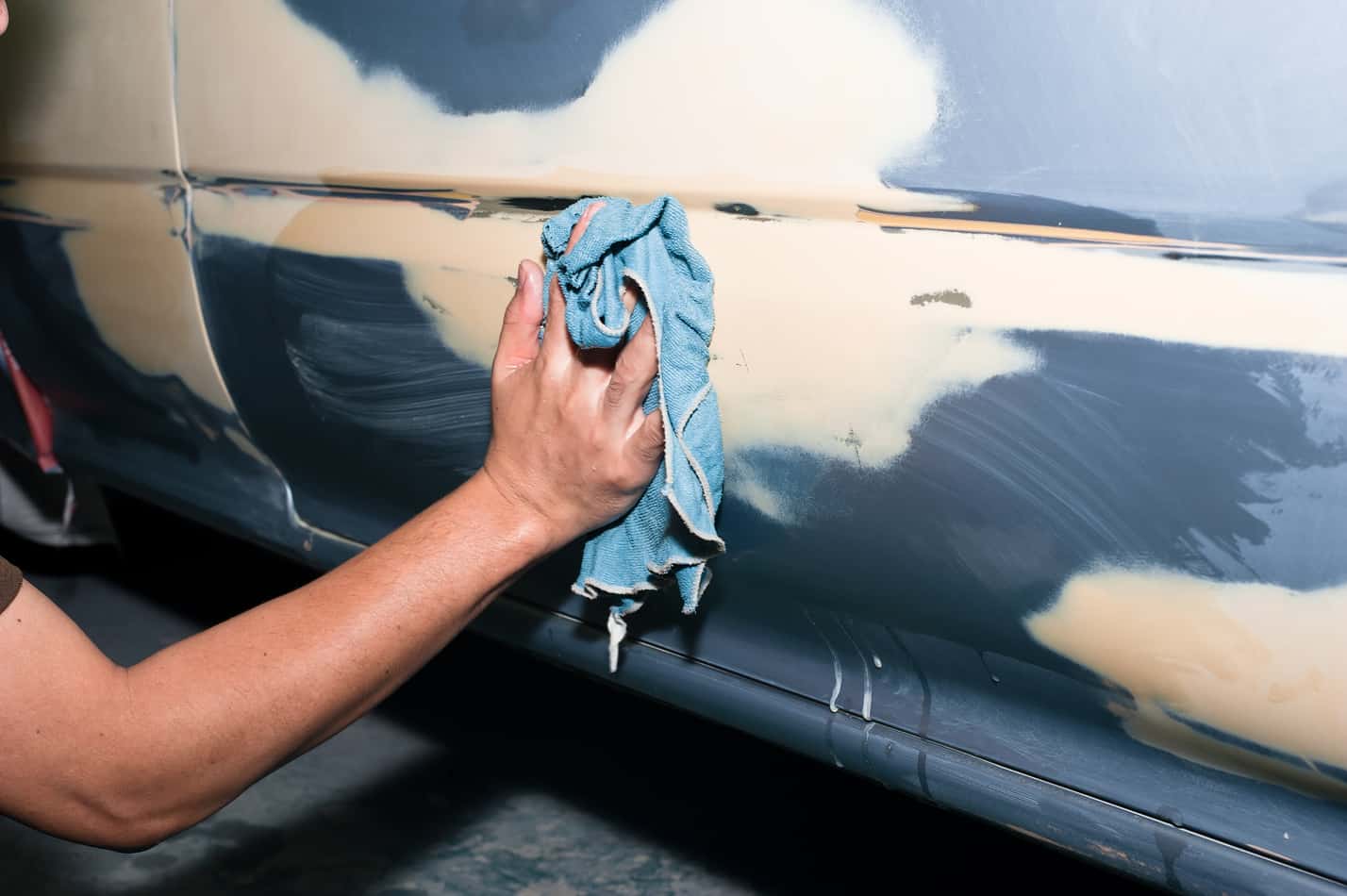



1 thought on “How to Clean Aluminum Before Welding (Two Steps)”